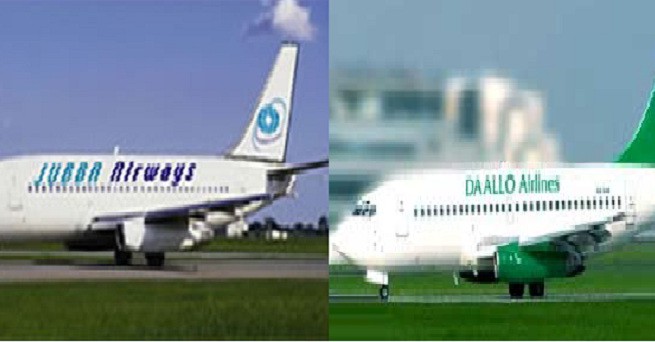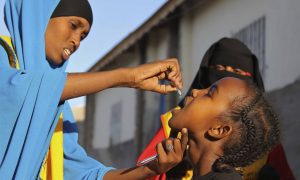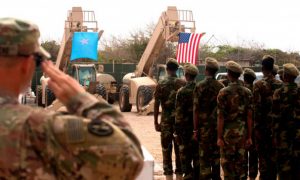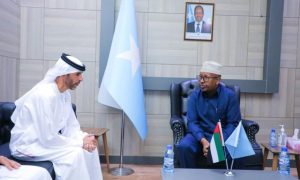
Muqdisho, 10 November 2015: When Daallo Airlines called in Dubai-based consultancy Aerotask for a bit of business advice, neither side realised the job would culminate in the merger of the airline with local rival Jubba Airways fewer than six months later. Victoria Moores reports.
The merger between Daallo Airlines and rival Jubba Airways came as a bit of a surprise to Rob Watts, vice president airline financial consulting at Aerotask.
“We were originally engaged by Daallo in September 2014 with what just started off as business planning,” explained Watts.
However, Daallo started talking to Jubba and they came to an arrangement. Then it transformed into ‘how do we do this merger’?
The job became more complicated, the fee remained the same, and by February 2015 the two privately-owned scheduled airlines were merged.
he new arrangement made perfect sense, according to Daallo Airlines CEO Mohamed Ibrahim Yassin.
“We had a lot of experience of doing the same thing again and again, but doing it the wrong way,” he said. “It was high time for us to put our forces together. We were operating to Dubai three times a week from Somalia and Djibouti and they [Jubba] were doing exactly the same thing. Each aircraft was half empty, so it became a matter of common sense and maturity that we had to transcend that losing game and go into consolidation.”
Technically Daallo and Jubba were long-term rivals, sharing the same model and niche, operating domestic flights within Somalia, to Dubai, Djibouti and Kenya. However, in practice relations were good between the two airlines.
“Daallo and Jubba were always good acquaintances; it wasn’t a competitive relationship, so they just decided to work together. They already had the basic terms. It was very relaxed,” said Watts.
Both carriers rely heavily on wet- or damp- leased aircraft for fleet flexibility, using anchor aircraft – a BAe 146 and Airbus A321 for Daallo, and Boeing 737s for Jubba – as a hook for their air operator’s certificates (AOCs).
Their networks are alike but, crucially, Daallo has a Djibouti AOC, while Jubba has a Kenyan one. “They have two AOCs, in two countries, giving them access to different sets of route rights which, for the time being, are not being used too heavily,” Watts said.
But the two airlines were coming under increasing external pressure, with carriers like Flydubai launching operations to Daallo and Jubba’s Mogadishu hub. “It was quite clear this was what they had to do,” Watts said. “Their primary market from Dubai to Somalia was getting really diluted by these carriers, so they needed to shift their focus from Dubai to intra-Somalia. Nobody else can do the domestic feed around Somalia and connect it to Dubai like they do, so they needed to work together.
Aerotask was hired by each of the airlines to advise on the deal, evaluate their respective operations and prepare a business plan for the carriers post-merger. The modelling was done at consolidated entity level – viewing the two airlines as one – and the main focus for the work was capacity management.
“We didn’t reinvent the wheel,” said Watts. “They were operating the same routes, on the same days, within an hour of each other, so we looked at optimising the network and then, for the future, moving to similar aircraft so they can have type synergies. Individually their niche was the same and together it remains the same, domestic Somalia. Nobody else is willing to enter that market because of the associated risks, so their combined niche is connecting the wider African market to domestic Somalia.
In terms of structure, Aerotask recommended that Daallo and Jubba should become subsidiaries of a new holding company, mirroring the structure used by British Airways (BA) and Iberia parent International Consolidated Airlines Group (IAG). “That way, the holding company can hold as many airlines as it likes, as long as it maintains 49% ownership and doesn’t have effective control,” said Watts.
Daallo and Jubba took this advice. They have maintained their own AOCs and created the Africa Aero Alliance, which has taken stakes in both carriers.
“The structure is set up so that shareholders can join from other airlines. Everyone would become a shareholder in the holding company and the holding company would hold 49% of the other companies. The original shareholders would continue to own 51% [of their own carrier], so they maintain the nationality of the airlines,” explained Watts.
Effectively Africa Aero Alliance is aiming to be like the former Air Afrique, but without the political intervention. This model is also being pursued by low-cost carrier FastJet and South African start-up Skywise. However Daallo and Jubba are planning to offer a traditional network airline product.
“The goal is for this thing to be cross-Africa, similar to what FastJet is trying to do, with multiple AOCs. That is the only way to expand in Africa. African airlines can only work together through commercial consolidation, otherwise they need to set up multiple AOCs and that is a really inefficient way to grow. That’s what the situation dictates right now within the current legal framework,” said Watts.
Yassin highlighted the situation in Djibouti as an example of the need for consolidation. “Over the last six or seven years there have been 10 start-up carriers and each one of them flew for only one year. It’s the same story across Africa. What we need is consolidation.”
While the physical merger has proceeded rapidly, Daallo and Jubba are still adapting to their newly combined form, figuring out their commercial, network and leadership structures. “The merger itself is not easy. We are putting two company cultures together, that’s quite a difficult task so you need preparedness, vision and diligence to make it a success,” said Yassin.
Then there is the fleet. Aerotask recommended that Daallo should phase out its BAe146 at its next heavy maintenance interval and advised Jubba to make some minor aircraft- related changes to its AOC set-up.
In the short term, Daallo and Jubba does not want to add aircraft – its focus is on better management of its existing capacity – so it will consolidate its existing fleet of five wet-leased narrow-bodies (two 737-200s, a 737-300, a 737-400 and an A321-100), plus the BAe146 and two Antonov AN 24 turboprops.
It is also looking at modernising and unifying its fleet. This is likely to see it shift from wet- to dry-leases and then, ultimately, aircraft ownership. “The carrier wants to go into aircraft ownership, basically to give it more control of its own aircraft. The types it has are adequate for the short term, but then it will look at a fleet renewal and type synergies,” said Watts.
Ultimately, Daallo and Jubba will most likely eye a couple of 50- to 70-seat single-class turboprops, creating a potential business opportunity for Bombardier and ATR, or a used aircraft seller. They are also looking to take around three dual-class narrow-bodies. In the longer term, the partners may also consider resuming flights to Europe.
However, for the time being they have their hands full. “The merger is a lot of work. I think it will take them a couple of years to sort out their new culture, processes and systems. This is too much work to do all at once. The legalities may have been finalised, but the work of getting everyone on the same page is a long process,” said Watts.
,
_____________________________________________________________________________________
Xafiiska Wararka Qaranimo Online | Mogadishu, Somalia
_____________________________________________________________________________________Advertisement
_____________________________________________________________________________________







